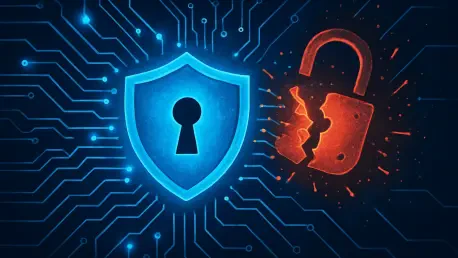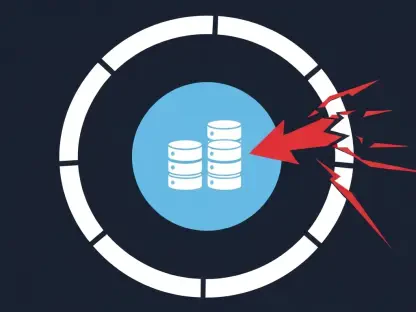In a startling breach of cybersecurity, the Business Council of New York State (BCNYS), a prominent association representing various businesses and professional organizations across New York, has fallen victim to a significant cyberattack. This incident, which compromised the personal and sensitive data of over 47,000 individuals, has raised urgent concerns about the security of personal information in the digital age. The attack, discovered months after it initially occurred, exposed a wide array of data, including Social Security numbers, financial details, and even healthcare information. As cybercriminals continue to exploit vulnerabilities in organizational systems, this breach serves as a critical reminder of the importance of robust cybersecurity measures. The fallout from this incident is still unfolding, with affected individuals now facing potential risks of identity theft and fraud. This article delves into the details of the breach and provides actionable steps to help safeguard personal information in the wake of such a significant data exposure.
1. Details of the Cyberattack on BCNYS
The cyberattack on the Business Council of New York State was first detected in early August, several months after the initial breach occurred in late February. According to a report filed with the Office of the Maine Attorney General, the incident affected 47,329 individuals, exposing highly sensitive data to unidentified cybercriminals. The stolen information includes full names, Social Security numbers, dates of birth, state identification numbers, and financial details such as bank account and routing numbers, payment card information, and taxpayer identification numbers. Additionally, health-related data, including medical diagnoses, treatment information, and insurance details, was also compromised. This wide range of exposed information poses a severe risk to those affected, as it could be used for various fraudulent activities. At this point, there is no concrete evidence that the stolen data has been misused in the wild, but the potential for abuse remains a pressing concern for all involved parties in this unfortunate breach.
The delayed discovery of the breach highlights a critical gap in the organization’s cybersecurity monitoring and response mechanisms. It took nearly six months for BCNYS to identify the intrusion, a delay that could have allowed attackers ample time to exploit the stolen data. While investigations are ongoing, this incident underscores the challenges many organizations face in detecting sophisticated cyberattacks in a timely manner. The breach not only affects individual members but also erodes trust in the association’s ability to protect sensitive information. Cybersecurity experts emphasize that such delays in detection are not uncommon, especially when attackers use advanced techniques to cover their tracks. For those impacted, the uncertainty surrounding the potential misuse of their data adds an additional layer of stress. This situation serves as a stark reminder that even well-established organizations can fall prey to cyber threats if adequate defenses and monitoring systems are not in place to counter evolving risks.
2. Potential Risks and Consequences for Victims
The breadth of data stolen in the BCNYS cyberattack creates a host of potential risks for the 47,000+ individuals affected. Cybercriminals could use the compromised information to commit identity theft by opening unauthorized bank accounts, applying for credit lines, or making fraudulent purchases in victims’ names. Beyond financial fraud, the stolen data could also be leveraged for phishing schemes, where attackers pose as legitimate entities to extract further sensitive information. Additionally, the exposure of taxpayer identification numbers raises the risk of fraudulent tax filings, potentially leading to significant financial losses or legal complications for victims. Even more concerning is the possibility of medical identity theft, where stolen healthcare data could be used to access medical services or prescriptions under someone else’s name, potentially disrupting legitimate healthcare access for the affected individuals and creating long-term challenges.
The consequences of such a breach extend beyond immediate financial or medical impacts, often causing emotional and psychological distress for victims. Constantly monitoring for signs of fraud or unauthorized activity can be a time-consuming and stressful endeavor. Many individuals may feel a loss of control over their personal information, leading to a pervasive sense of vulnerability. Furthermore, resolving issues stemming from identity theft or fraudulent activity often requires significant effort, including disputing unauthorized transactions, replacing compromised identification, and restoring credit standings. While there is no current evidence of the stolen data being exploited, the absence of immediate misuse does not guarantee safety. Cybercriminals often bide their time, waiting for the right moment to strike. This lingering threat means that affected individuals must remain vigilant for an extended period, underscoring the far-reaching and enduring impact of such data breaches on personal security.
3. Protective Measures to Stay Safe After the Breach
For those potentially impacted by the BCNYS data breach, taking immediate steps to protect personal information is crucial. Start by placing a fraud alert or credit freeze with the major credit bureaus to prevent unauthorized access to credit reports. Regularly monitoring bank and credit card statements for suspicious activity can help detect fraud early. BCNYS has offered free identity theft protection and credit monitoring services to affected individuals, and enrolling in these programs is highly recommended. Additionally, changing passwords for online accounts and enabling multifactor authentication adds an extra layer of security to prevent unauthorized access. Notifying banks and insurance providers about the potential for fraud ensures they are on alert for unusual activity. Requesting an IRS Identity Protection PIN can also help safeguard against fraudulent tax filings, providing a critical barrier against financial misuse of stolen data in this context.
Beyond these initial actions, individuals should pay close attention to healthcare-related information to mitigate risks associated with medical identity theft. Reviewing Explanation of Benefits (EOB) statements from insurance providers for unfamiliar claims or services is essential. Contacting medical providers to flag any suspicious activity can prevent unauthorized use of healthcare data. Staying proactive by keeping detailed records of communications with financial institutions, credit bureaus, and healthcare providers can also aid in resolving any issues that arise. Cybersecurity experts advise maintaining a cautious approach to sharing personal information online and being wary of unsolicited communications that may be phishing attempts. While the full extent of the breach’s impact remains unclear, adopting these protective measures can significantly reduce the likelihood of falling victim to fraud. Taking swift and decisive action in the aftermath of such incidents proves vital in minimizing damage and restoring a sense of security for those affected.









